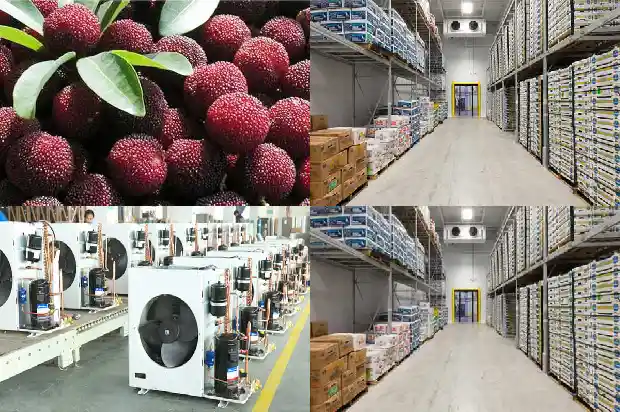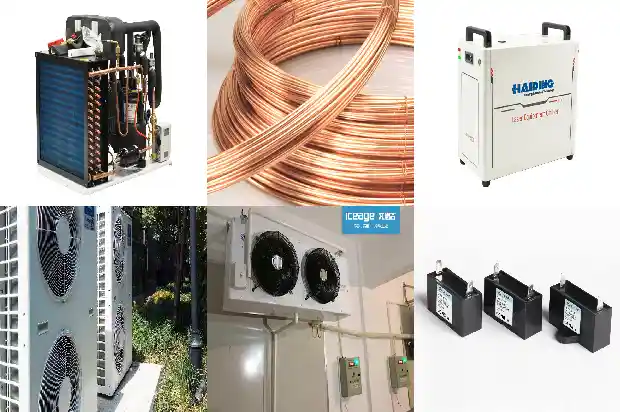Precautions for Inspecting Valves in Refrigeration Systems
2024-09-26
In refrigeration systems, many ball valves, globe valves, check valves, safety valves, etc. are used. With the long-term operation of refrigeration devices, the valves in the system may fail. Valve failures include sealing failure, action failure, and functional failure. Sealing failure refers to leakage in the valve, including external leakage and internal leakage. Action failure refers to the inability of the valve to operate normally, including drive failure, stem jamming, and valve core seizure. Functional failure refers to performance failure in the function that the valve should play. For example, inaccurate flow regulation, unstable decompression pressure, and safety valves not tripping at the specified pressure. Different valve types may have different functional failure states. So, when conducting daily inspections and maintenance of these valves or handling failures, what aspects should be noted? Let's find out together.
Regarding the daily inspection cycle and inspection items of valves, they are generally determined according to the characteristics of production devices, medium properties, corrosion rates, operating conditions, and the valve's own characteristics. Inspection generally includes the following contents:
- Regularly check the lubrication of the valve's oil cup, oil nozzle, valve stem thread, and valve stem nut. For parts of the valve with exposed valve stems, apply lubricating grease or add a protective sleeve for protection.
- Regularly check the sealing and fastening conditions of the valve. Deal with any leaks and looseness in a timely manner. For example, check whether the connections of the valve are loose. If so, tighten them in time; check whether the packing is outdated and ineffective. If damaged, replace it in time; check the wear or change of the valve's switch limit position and the wear of the sealing surface, and adjust the limit or replace the sealing ring in time.
- For valves with pneumatic and hydraulic devices, regularly clean the pneumatic and hydraulic devices.
- Check the anticorrosive layer and insulation layer of the valve. Repair any damage in a timely manner.
- Check the rust prevention of flange bolt threads. For those with ineffective rust inhibitor layers, apply rust inhibitor for protection.
- Check the parts on the valve, such as handwheels and handles. If damaged or missing, complete them as soon as possible.
- For long-term unused water valves and steam valves, if there is a drain plug at the bottom of the valve for drainage, open the drain plug for drainage.
- Regularly calibrate safety valves and strictly follow the national standards for the maintenance and repair of pressure vessels.
Before overhauling the valve, first check the technical data related to the valve and device. Prepare the tools, measuring instruments, and materials needed for overhaul. Clean the medium in the valve according to the safety operation specifications. When overhauling the valve, it generally includes the following contents:
- Clean and inspect the valve body and all valve parts. Replace and repair damaged valve parts.
- Grind the sealing surface. Repair the flange sealing surface. Replace the damaged sealing surface of non-metallic materials.
- Replace or add packing and replace gaskets.
When overhauling the valve, also hang an identification sign on the valve, indicating the overhaul number, working pressure, working temperature, and medium. For disassembled valve parts with direction and position requirements, check or mark them. Copper gaskets should be annealed before installation. Bolts should be installed neatly. When tightening the middle flange bolts, gate valves and globe valves should be in the open state. After each repair of the valve, a conspicuous mark should be made on the valve body.
After the overhaul is completed, check and verify the overhaul results again:
- The valve nameplate is complete, and the lead seal of the safety valve is intact.
- The valve casting has no defects such as cracks, shrinkage cavities, and slag inclusions.
- The machined surface of the valve forgings shall have no defects such as interlayers, heavy skins, cracks, and blemishes.

- The welds of valve weldments have no defects such as cracks, slag inclusions, pores, undercuts, and poor forming.
- The valve bolts should be fully tightened without looseness. The transmission system parts are complete and in good condition.
- Check the contact surface imprint with a developer on the sealing surface.
- The valve seat and valve body should be firmly connected, tight and without leakage.
- The valve plate and guide rail should be properly matched. There should be no jamming or derailment at any position.
- The flange sealing surface should be clean without scratches. The packing gland is undamaged and not deformed.
- For bolts with tightening torque requirements, tighten them according to the specified torque. The error of tightening torque should not be greater than ±5%.
- The connection between the valve stem and the opening and closing part should be firm and not fall off. The handwheel and bearing gland shall not be loose.
- When the valve is closed, the connection between the valve stem end and the valve plate should be centered between the valve plate and the valve body.
- The valve stem surface should have no pits, scratches, and axial grooves. The head of the valve stem should not be dented or deformed.
- Before installation, valves should be inspected according to the corresponding specifications and undergo shell pressure test and sealing test. Valves with upper sealing structures should also undergo upper sealing test.
For valves that are reinstalled into the system after disassembly, pay attention to keeping the installation direction and installation method consistent with the original state. In particular, pay attention to the following matters:
- For valves with specified flow directions, install them according to the specified flow direction of the valve.

- Generally, do not install the valve handwheel facing down to avoid corrosion of the valve stem.
- Lift check valves should be installed horizontally. The pin shaft of swing check valves should be horizontal.
- For valves with safety relief devices, the relief valve should have a lead-out pipe. When installing, the relief direction should not be directly facing the operator.
Related Articles
- Precautions for Using Rotary Refrigeration Compressors
- Precautions for Commissioning of Screw Parallel Units
- Four Combustible and Explosive Refrigerants: Precautions When in Use!
- Accident Handling and Precautions for Circulating Water Pumps
- What Precautions Should Be Taken When Using a Fresh - keeping Cold Storage in Summer?
- Operations and Precautions for Multi - split Air Conditioners: Blowing Debris, Air Tightness, Vacuum Drying, and Refrigerant Charging
- Precautions for the Installation and Use of Water Flow Switches
- Precautions for the Hot Gas Bypass Valve of Refrigeration Units in Cold Storage
- Parallel Installation and Precautions for Scroll Compressors
- Installation and Oil Return Precautions for Refrigeration Equipment Pipelines
- Precautions for Replacing Refrigeration Compressor Refrigerant Oil
- Precautions for Cold Storage Design
- Common Pressure Valves and Protection Devices in Refrigeration Units
- Introduction to Control Valves in Refrigeration Systems
- Selection of Bypass Control Valves for Air - conditioning Water Systems
- New Technology: A New Control Method for Throttle Valves in Refrigeration Systems
- Selection and Installation of Thermal Expansion Valves
- What Causes Noise in Pressure Reducing Valves?
